Camping with your furry friend can be a great adventure, but it also requires some planning to ensure your dog’s safety and comfort.
One of the most important aspects to consider is where your dog will sleep at night. While tents and sleeping bags are traditional options, some pet owners may wonder if it is safe for their dog to sleep in the car.
With the proper preparation, you can make it safe for your dog to sleep overnight in your car. There are, however, some dangers of letting your dog sleep in the car.
In this article, we will explore the safety concerns associated with dogs sleeping in cars, the pros and cons, and then provide tips on how to keep your canine companion safe and comfortable while camping.
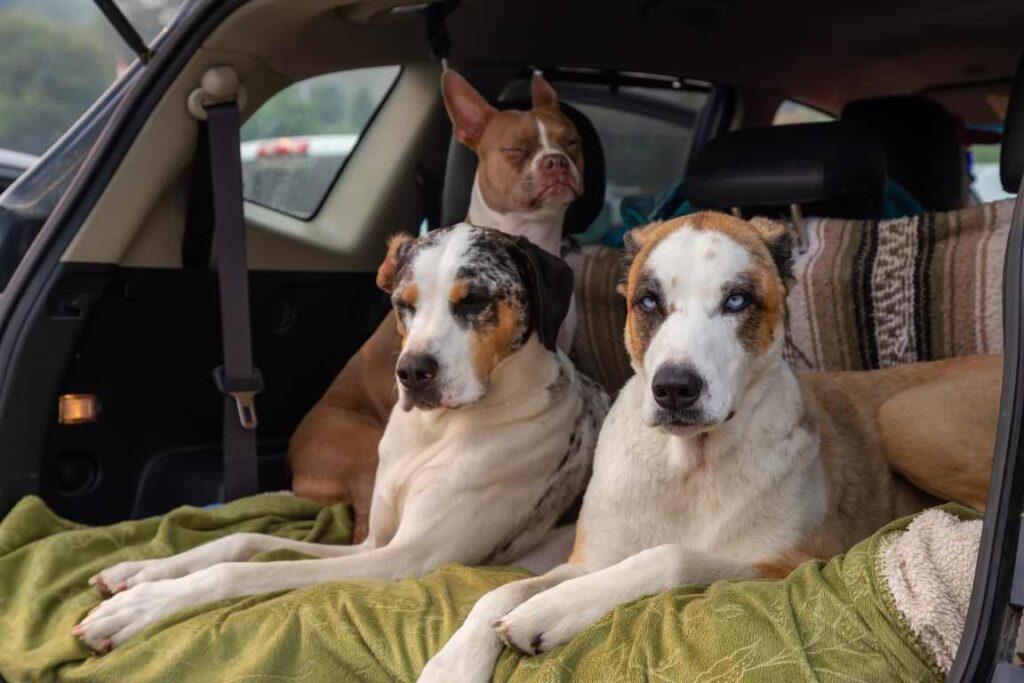
Factors That Can Affect Your Dog’s Safety
If you do decide to let your dog sleep in the car overnight, there are several factors to consider to ensure their safety.
The first thing to consider is the weather. As mentioned earlier, leaving your dog in a hot car can be dangerous, but the same is true for cold weather. If the temperature drops too low, your dog can develop hypothermia, which can be just as deadly as heatstroke.
You’ll also want to consider the size of your car. If you have a small car, your dog may not have enough space to move around and stretch their legs. This can be especially true for larger breeds.
Another factor to consider is your dog’s temperament. Some dogs are anxious or nervous when left alone, and sleeping in a new and unfamiliar environment can make them even more stressed. If your dog is prone to anxiety or stress, it’s best to avoid letting them sleep in the car overnight.
The Dangers of Dogs Sleeping in Cars While Camping
Leaving a dog to sleep in a car while camping can pose several dangers to their health and well-being.
The primary concern is the risk of heatstroke. In hot weather, cars can quickly become like ovens, with temperatures reaching dangerous levels within minutes.
Dogs, who are unable to regulate their body temperature as effectively as humans, are particularly vulnerable to heatstroke. Leaving a dog in a hot car can result in heat exhaustion, dehydration, and even death.
Another concern is the lack of ventilation in a car. Dogs need fresh air to breathe, and if they are left in a car with the windows closed, they can quickly suffocate. Additionally, the lack of fresh air can cause the buildup of harmful gases, such as carbon monoxide, which can be fatal.
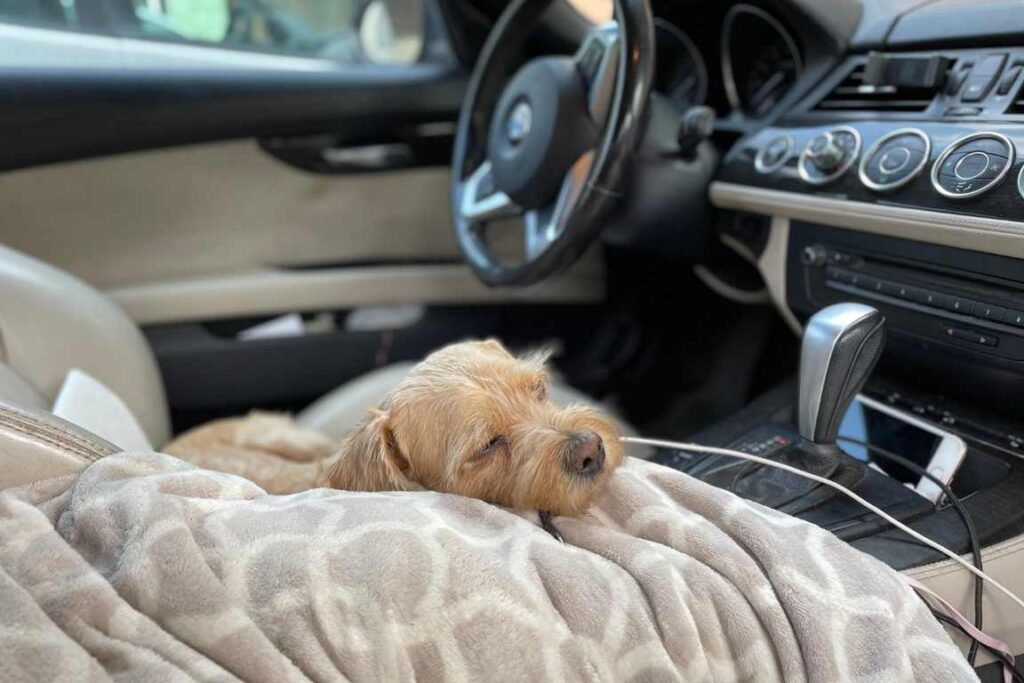
The Risks of Heatstroke in Dogs
Heatstroke is a life-threatening condition that can occur when a dog’s body temperature exceeds 104 degrees Fahrenheit.
Symptoms of heatstroke in dogs include panting, rapid heartbeat, excessive drooling, vomiting, and lethargy.
If left untreated, heatstroke can cause organ failure, seizures, and even death. It is crucial to recognize the signs of heatstroke and take immediate action if you suspect your dog is suffering from this condition.
The Dangers of Carbon Monoxide Poisoning in Dogs
Carbon monoxide is a colorless, odorless gas that can be deadly if inhaled in high concentrations. If a dog is left in a car with the engine running or in an enclosed space where carbon monoxide is present, they can quickly succumb to this toxic gas. Symptoms of carbon monoxide poisoning in dogs include weakness, lethargy, confusion, and seizures. It is essential to seek emergency veterinary care if you suspect your dog has been exposed to carbon monoxide.
The Pros of Dogs Sleeping in Cars While Camping
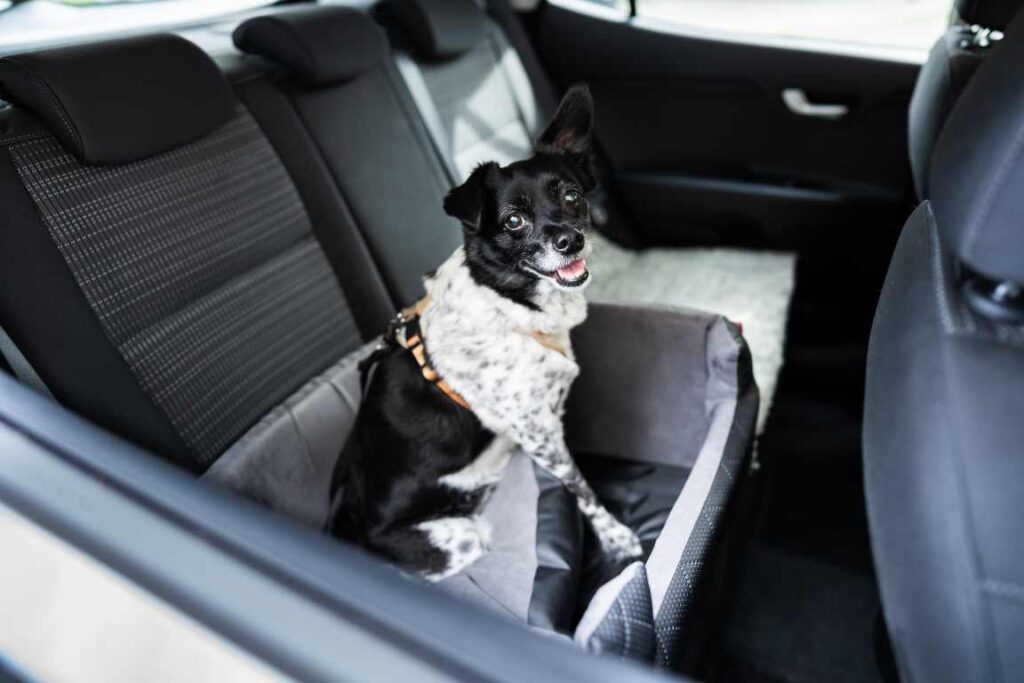
Security
Sleeping in a car can provide a secure environment for your dog, particularly if you are camping in an unfamiliar area. Cars provide a barrier between your dog and potential dangers such as wildlife or other campers. Additionally, having your dog sleep in the car can deter thieves or other unwanted intruders from approaching your campsite.
Comfort
Many dogs find sleeping in a car more comfortable than sleeping in a tent or on the ground. The car provides a level and stable surface, which can be particularly beneficial for dogs with joint problems or arthritis. Additionally, having access to a familiar space, such as their own bed or crate, can provide a sense of security and comfort for your dog.
Convenience
Sleeping in the car can be a convenient option for pet owners, particularly if you have a large dog or multiple dogs. It eliminates the need to set up and take down a tent or other sleeping area, and can provide a quick and easy solution for impromptu camping trips or road trips.
The Cons of Dogs Sleeping in Cars While Camping
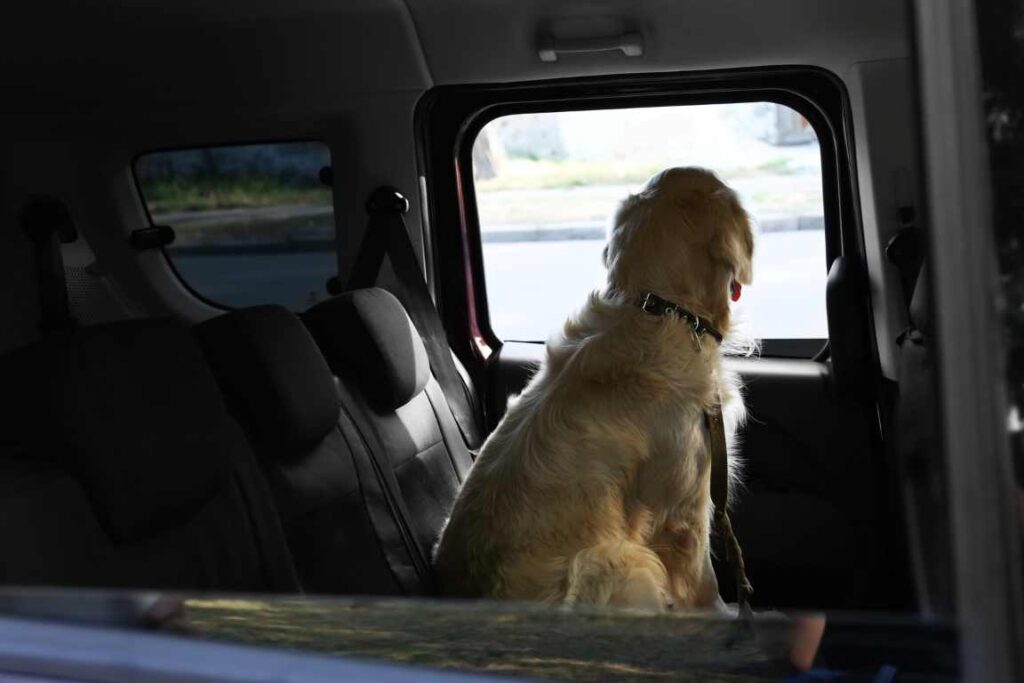
Temperature Control
One of the biggest concerns with having your dog sleep in the car is temperature control. Cars can quickly heat up or cool down, and leaving your dog in a hot or cold car can be dangerous or even fatal. It is important to monitor the temperature inside the car and ensure that it remains within a safe range.
Ventilation
Another concern with having your dog sleep in the car is ventilation. Poor ventilation can lead to a build-up of carbon monoxide, which can be deadly for both humans and dogs. It is important to ensure that the car is properly ventilated and that there is enough fresh air circulating.
Hydration
Dogs require access to water at all times, and this can be more difficult to provide when they are sleeping in a car. It is important to ensure that your dog has access to water throughout the night, either by providing a bowl of water or by leaving the car windows open enough to allow rain or dew to collect in a container.
Understanding Your Dog’s Needs
Before you start packing for your trip, it’s important to understand your dog’s specific needs. Every dog is unique, and what works for one may not work for another. Some things to consider include:
Breed
Some breeds are better suited for outdoor activities than others. For instance, dogs with thick coats may not do well in hot and humid conditions.
Age
Puppies and senior dogs have different needs when it comes to sleeping arrangements. Puppies may need more frequent potty breaks, while senior dogs may need more comfortable bedding.
Health
Dogs with medical conditions or mobility issues may need special accommodations in the car.
Preparing Your Car for Your Dog
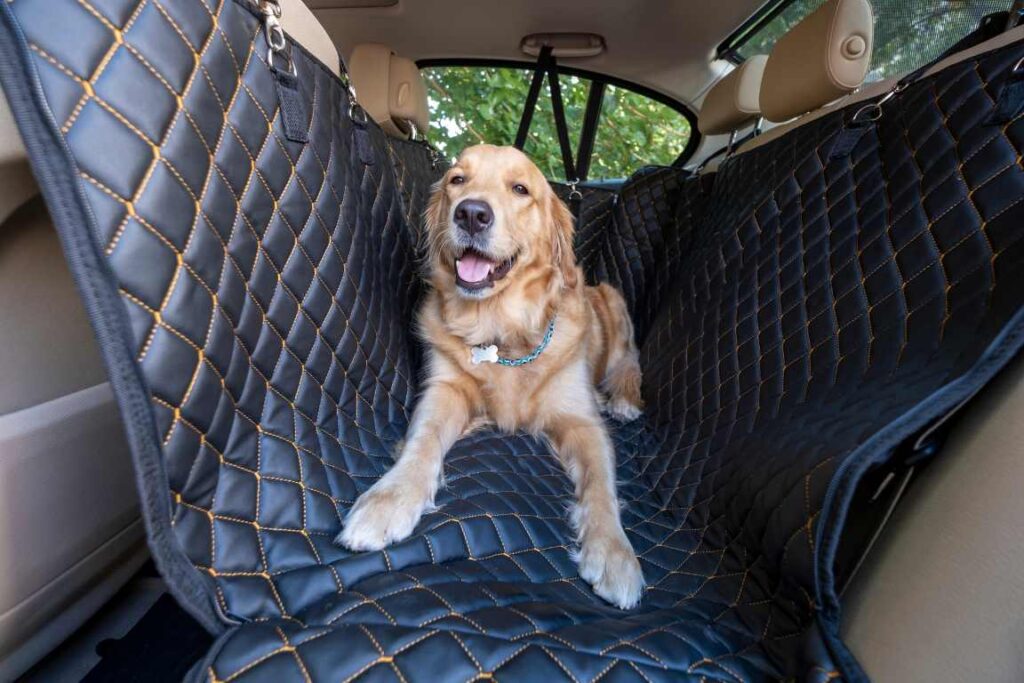
Before you hit the road, you need to ensure that your car is safe and comfortable for your dog. Here are some tips to consider:
Cleaning the Car
Clean the car thoroughly and remove any loose items that may pose a choking hazard.
Providing Comfortable Bedding
Your dog needs a comfortable place to sleep, so make sure to bring their favorite blanket or bed.
Ensuring Proper Ventilation
Make sure the car is well-ventilated, and the temperature is comfortable for your dog.
Staying Safe on the Road
When traveling with your dog, safety should be your top priority. Here are some tips to consider:
Resting Frequently
Take frequent breaks to allow your dog to stretch their legs and relieve themselves.
Keeping Your Dog Secure
Use a crate or a harness to keep your dog secure during the trip.
Providing Adequate Water and Food
Make sure to provide your dog with plenty of water and food during the trip.
Tips for Letting Your Dog Sleep in the Car
Once you’ve prepared your car and taken the necessary safety precautions, it’s time to help your dog get comfortable enough to sleep. Here are some tips to consider:
Providing a Familiar Scent
Bring a familiar item from home, like a blanket or toy, to help your dog feel more comfortable.
Creating a Calm Environment
Play soothing music or use a white noise machine to help your dog relax and fall asleep.
Covering the Windows
Covering the windows can help your dog sleep better by blocking out light and reducing outside noise.
Worried about taking your dog camping? Read the article that I wrote about minimizing your dog’s stress on your camping trip.
Conclusion
Traveling with your dog can be a fun and rewarding experience, but it’s important to ensure their comfort and safety. By understanding your dog’s needs and taking the necessary precautions, you can help your furry friend sleep comfortably in the car. With these tips, you can make the experience stress-free for both you and your dog.
